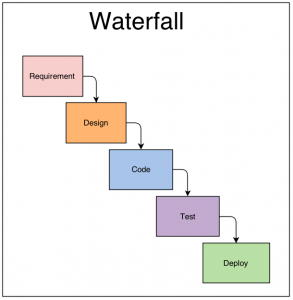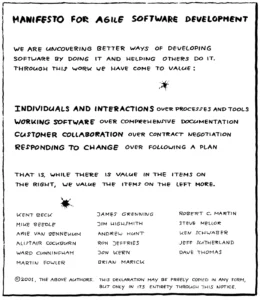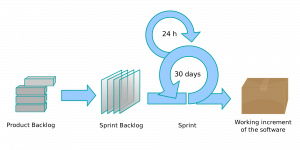Agile Software Development has transformed the software engineering landscape by introducing a dynamic and flexible approach to project management and execution. Unlike traditional methodologies such as the Waterfall model, Agile emphasises adaptability, continuous feedback, and collaboration. This article delves into the principles, patterns, and practices that define Agile software development, exploring its origins, the theories that underpin it, and the methodologies that have emerged to support its implementation. By understanding these core elements, we can appreciate why Agile has become a cornerstone of successful software development in today’s fast-paced, ever-evolving technological environment.
Why are Agile software development principles, patterns and practices used?

Computers were developed from the 1940s onward. In the 1960s, development projects became more extensive and more complex. Different System Development Life Cycle (SDLC) processes emerged. The most famous is the Waterfall Process. The name comes from a diagram by Royce in a well-known paper written in 1970. In reality, the paper questioned that model for lacking feedback loops.
The idea of early software development models was first to document all software requirements, then create the design, write the code, test and fix bugs and deliver the system. This did not always work well, so iterative development was introduced in the following decades. Iterative development is like the original frameworks but added iterations instead of one development cycle. This limited the scope for each round.
The problem with these models was that they still led to overruns, defects and many failed projects. An underlying issue was the belief that specifying software requirements in advance is possible. This may be true when you develop software for sending humans to the moon or create medical software. But in reality, it is a less helpful paradigm. Often, the software is designed with extensive user interfaces to support evolving or unconfirmed requirements. How did agile software development principles, patterns and practices come about?
How did agile software development principles, patterns and practices come about?

Agile software development principles, patterns and practices
Agile software development principles, patterns, and practices did not emerge anywhere. The demand for more flexible frameworks and processes grew with software development. Methodologies such as Scrum, XP (Extreme Programming) and others developed from 1990 onwards. The ideas of Scrum came from a paper written in Harvard Business Review in 1986. To be considered ‘agile’, methodologies must be lightweight, unlike traditional development methodologies.
What are agile software development principles?
In 2001, proponents of lightweight methodologies came together at a ski resort in the US and developed the Agile Manifesto. The Agile Manifesto distinguished agile methodologies from traditional methods by stressing essential components. At the same time, the manifesto celebrates sound principles from the past. The full manifesto is quoted below:
We are uncovering better ways of developing software by doing it and helping others do it. Through this work, we have come to value:
Individuals and interactions over processes and tools
Working software over comprehensive documentation
Customer collaboration over contract negotiation
Responding to change by following a plan
That is, while there is value in the items on the right, we value the items on the left more.
| Kent Beck Mike Beedle Arie van Bennekum Alistair Cockburn Ward Cunningham Martin Fowler | James Grenning Jim Highsmith Andrew Hunt Ron Jeffries Jon Kern Brian Marick | Robert C. Martin Steve Mellor Ken Schwaber Jeff Sutherland Dave Thomas |
© 2001, the above authors, this declaration may be freely copied in any form, but only in its entirety through this notice.
At the site, there are also 12 principles of agile development!
What is the theory behind agile software development?
Arguably, agile is a post-modern approach to software development. While agile software development principles, patterns and practices share many practices with traditional software development, certain things still stand out. One is the view that requirements are ambiguous, emerging and changing. Agile solves this by having frequent deliveries and testing software against reality as early as possible and as often as possible. This feedback loop allows users/customers, as well as developers, to learn continuously. There are suggestions on where the inspiration came from. Social Constructivism, Complex Adaptive Systems, Complexity theory and Double Loop learning are included. However, at the heart of agile methodologies is a pragmatic approach to using what works and adjusting when it does not.
What are agile software development patterns?

Agile software development principles, patterns, and practices have emerged. Some patterns are:
- Short iterations,
- Rigid planning
- Daily follow up
- Openness to change
- Minimum documentation
To the right is a diagram showing the Scrum process. Scrum may be the most used agile management methodology. While it has strong roots in software development, it is used in different industries. Agile is not ad hoc. Being lightweight does not mean being careless. Relatively agile teams are often, at least if not more disciplined than traditional teams. Other typical patterns are software engineering practices such as continuous building and software testing.
Conclusions
In conclusion, Agile software development principles, patterns, and practices have revolutionised how we approach software development. Emerging as a response to the limitations of traditional methodologies like the Waterfall model, Agile promotes flexibility, collaboration, and continuous improvement. The Agile Manifesto and its underlying principles highlight the importance of individuals and interactions, working software, customer collaboration, and responsiveness to change. These principles are realised through various Agile methodologies, such as Scrum and Extreme Programming (XP), which emphasise short iterations, adaptive planning, daily stand-ups, and minimal documentation.
Agile’s effectiveness lies in its ability to accommodate evolving requirements and incorporate feedback through frequent deliveries and testing. This iterative process ensures that software development is more aligned with user needs and can adapt swiftly to changing circumstances. By fostering a culture of openness to change and continuous learning, Agile methodologies mitigate the risks of overruns, defects, and project failures commonly associated with traditional approaches.
Agile’s success is ultimately rooted in its pragmatic approach—embracing practices that work and adjusting those that do not. It combines the rigour of disciplined processes with the flexibility to innovate, making it a preferred choice for modern software development across various industries. For those seeking to deepen their understanding, further exploration of the Agile Manifesto, its twelve principles, and methodologies like Scrum and XP is highly recommended.
At Gislen Software, we practice various forms of Agile Software Development. You can read more about DevOps, continuous development, and Scrum, or contact us to ask how we can help you with Software Development.
References
I recommend you follow Kent Beck, Martin Fowler, Jurgen Appelo, Ken Swaber, Alistair Cockburn and Arlo Belshee.
